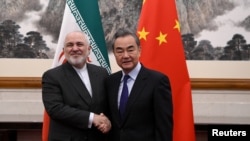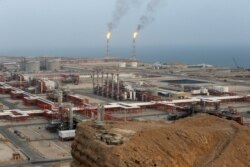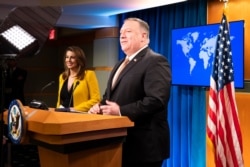Beijing is reported to be in the final stages of approving a $400 billion economic and security deal with Tehran, which some analysts say could give China a vast and secure source of energy and a strategic foothold in the Gulf.
Iran’s foreign ministry has confirmed that the potential agreement includes significant infrastructure investments and closer cooperation on defense and intelligence sharing. It’s also rumored to include discounts for Iranian oil.
The deal is the latest step in Beijing’s attempt to expand from a regional hegemony to a world power via its Belt and Road Initiative.
China-Iran deal
There are no concrete details of the deal available yet, but reports about what is under discussion indicate massive investment. China is reportedly considering investing $280 billion in developing Iran’s oil, gas, and petrochemical sectors; and another $120 billion in upgrading Tehran’s manufacturing infrastructure.
The deal’s scope was further illustrated when Iran’s Foreign Minister Mohammad Javad Zarif told parliament on July 5 that the country has been negotiating a 25-year accord with China “with confidence and conviction.”
A report by the Petroleum Economist suggests that the deal represents a potential shift to the global balance of oil and gas sector, as Iran has promised China guaranteed discounts on its oil and gas, and the right to delay payment for Iranian production up to two years.
China is Iran’s top trading partner and a key market for Iranian crude oil exports, severely impacted by U.S. sanctions.
How the United States fits in
Iran announced progress on the deal at a time when U.S. and China relations are fast sliding, raising the question if Tehran is joining forces with Beijing as part of a broader effort to counter Washington’s foothold in the Middle East.
The agreement appears to have been in development since 2016, when China and Iran announced a 25-year-long “comprehensive strategic partnership” during Chinese President Xi Jinping’s visit to Tehran.
Alex Vatanka, director of the Iran program at the D.C.-based think tank Middle East Institute, told VOA that the deal was not initially meant to be an anti-American initiative.
“Remember this was agreed in 2016. I think it was part of a broad Chinese ambition for Eurasia.” He said, “If you look at the Belt and Road initiative of China, Iran appears prominently in that.”
Yet Vatanka said the timing of the Iranian announcement is tricky, adding there is a possibility that Iran wants to take advantage of deteriorating U.S.-China relations and go ahead and finalize the deal. But he says the Iranian government likely is also doing this for domestic purposes.
“There is another driver. They want to show the Iranian people that they are not alone on the international stage,” said Vatanka. “The Americans are alone. Much of this is a game of psychology. Iranians leaders do not want to be seen in the eyes of the Iranian people that they brought the country to total isolation.”
In 2018, the Trump administration withdrew from the 2015 Iran nuclear deal and imposed new rounds of sanctions on Iran’s energy, finance, and military sectors.
Benjamin Friedman, policy director of military think tank Defense Priorities, argued that policy partly encouraged Iran to seek cooperation with China.
“It’s a good opportunity for China because [of] the United States’ sanctions on Iran. It is desperate now, probably is willing to sell its oil at more of a discount,” he said.
U.S. response
When asked about whether U.S. sanctions could have further strengthened the alliance between China and Iran, U.S. Secretary of State Mike Pompeo said the U.S. would continue to impose costs on Chinese companies that aid Iran.
“We have a set of sanctions related to any company or country that engages in an activity with Iran. The sanctions are clear. We have been unambiguous about enforcing them against our companies from allies, countries from all across the world. We would certainly do that with respect to activity between Iran and China as well,” he said at a press briefing on July 15.
Timothy Heath, a defense researcher at the RAND Corporation, said the China-Iran deal is just the latest example of escalating tensions between the U.S. and China.
“It follows the trend of the U.S. government policy that describes China as a competitor and a threat. The other trend is the growing deterioration in the U.S. China relations,” he told VOA.
“Issues keep piling up, and the relations keep getting worse,” he said, “China’s recent agreement with Iran is the country’s move to build up a partnership that would weaken U.S. presence in the Middle East. Both sides seem to be taking escalatory behavior to assert authority and to punish the other side, and this should be seen as another step in that broad trend.”








